What's New in GoLand
GoLand 2022.1 offers support for generics and Go workspaces.
We've also added new features for working with microservices. You can now see all endpoints in a dedicated tool window and generate HTTP requests right from your Go files.
As usual, the new version of GoLand brings updates for databases, as well as web development improvements.
If you prefer an interactive approach to learning, we invite you to complete the What's New in GoLand 2022.1 tutorial from the Welcome screen.
Generics
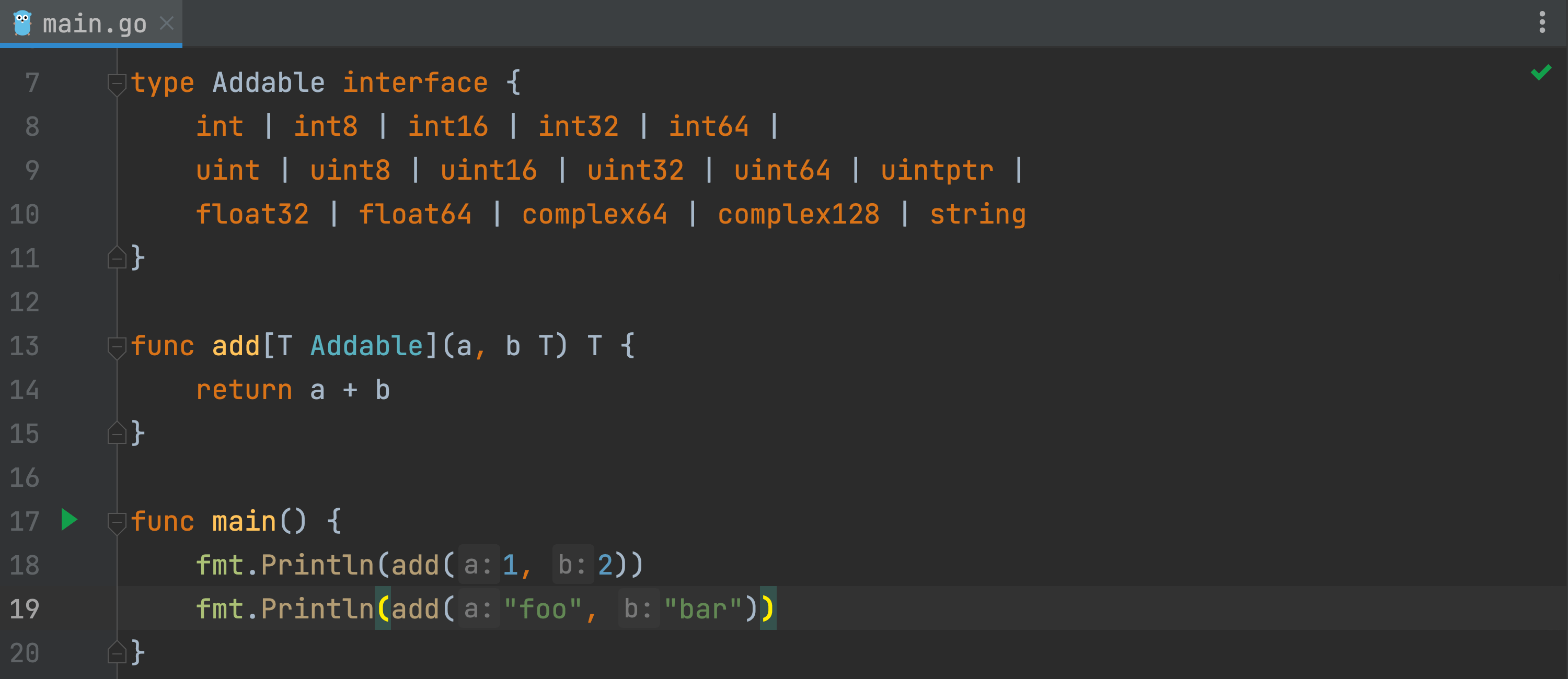
Improvements and bug fixes
Our most important task for this release was to fix false-positive and false-negative errors. We have fixed 200+ generics-related issues so far.
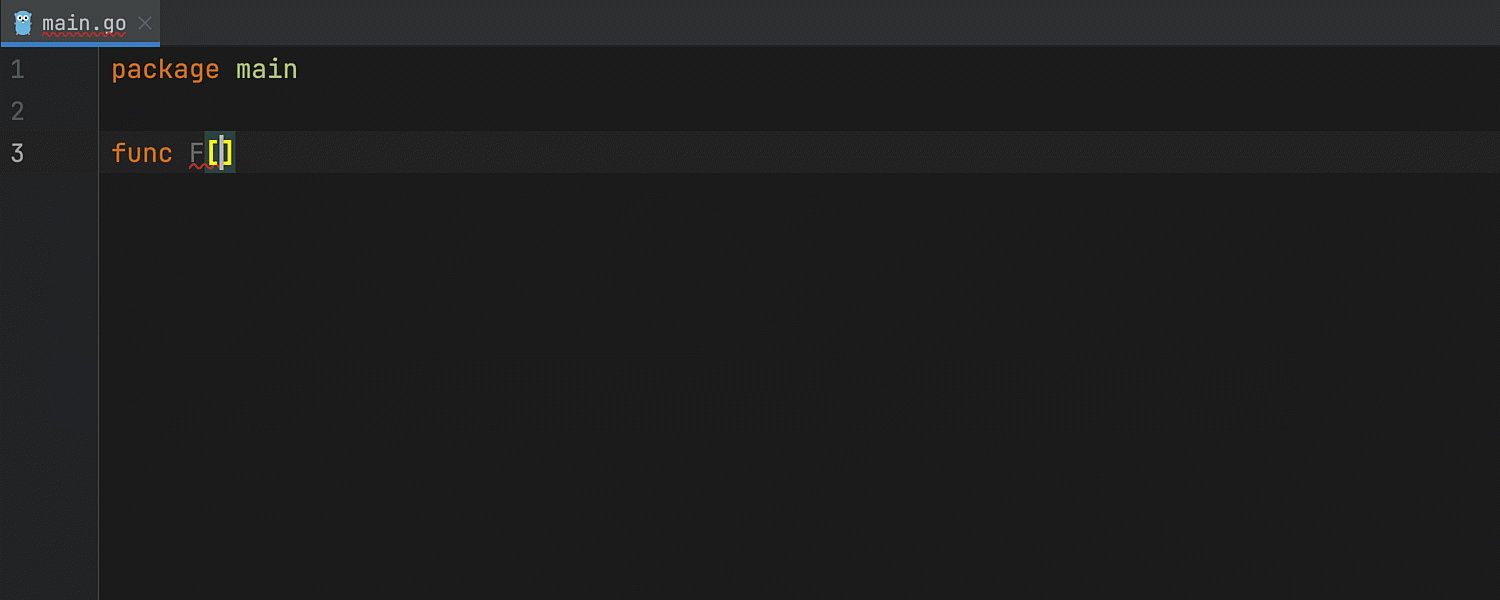
Completion
We've also added several features for type parameters.
As soon as you type an opening bracket, GoLand inserts a closing bracket for you.
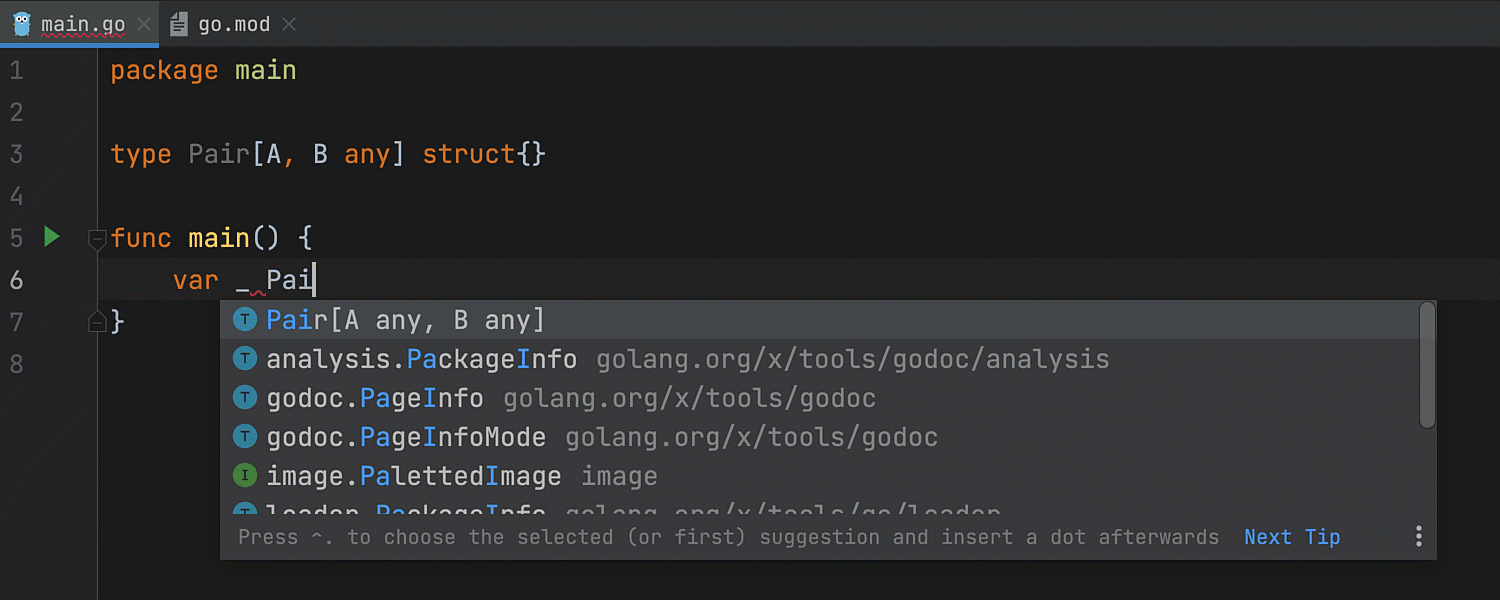
GoLand shows type parameters in the completion suggestions and inserts the brackets when you accept one of the suggestions.
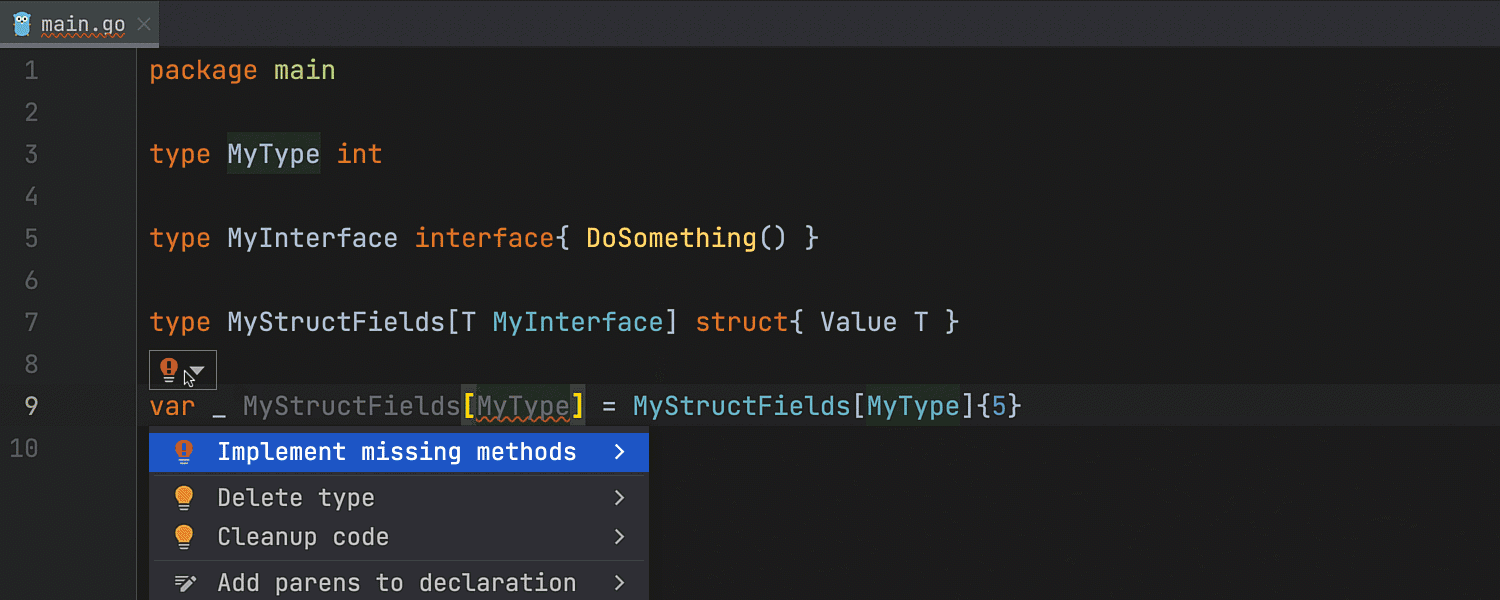
The Implement missing methods quick-fix
If a type argument doesn't have all of the methods from the interface it is constrained by, GoLand displays an error. You can implement missing methods by using a quick-fix right from the error message.
Alternatively, click on the red light bulb or press Alt+Enter, and then choose Implement missing methods.
Go workspaces
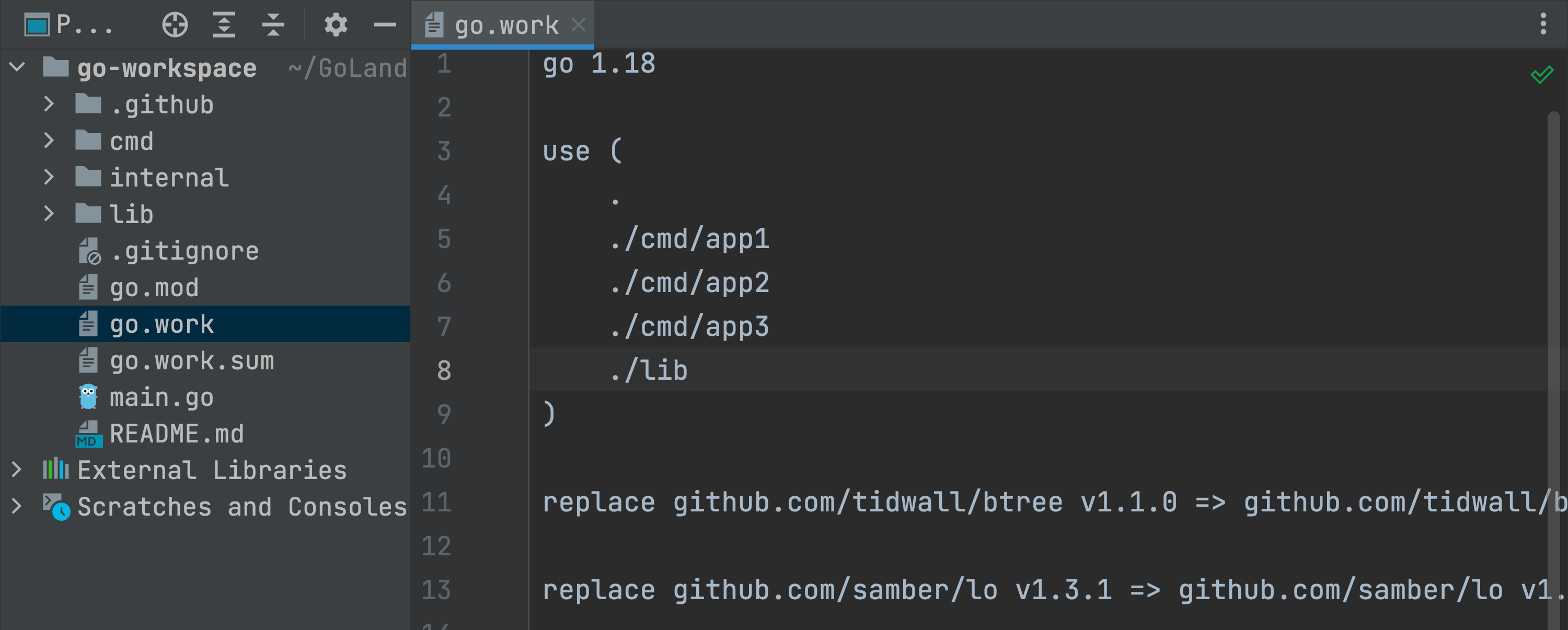
You can open any directory with a go.work file and continue developing as usual.
Later we will also implement syntax highlighting and code completion in go.work.
Microservices
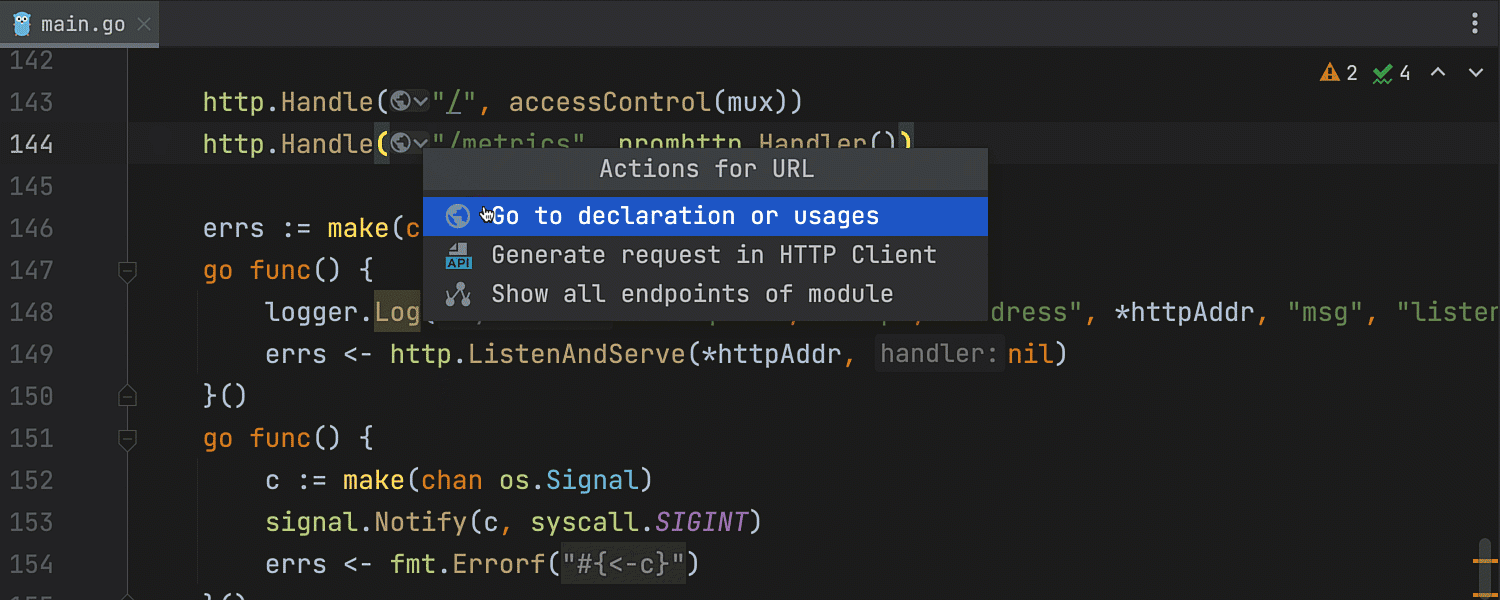
Find usages and navigate
Note: new features for building microservices work only with the standard library for now.
There is now a globe icon next to each endpoint in your Go files. When you click on the icon, GoLand will suggest several options.
The first option lets you find all of the usages of an endpoint and navigate to them. You can also see usages by pressing Ctrl and clicking on an endpoint.
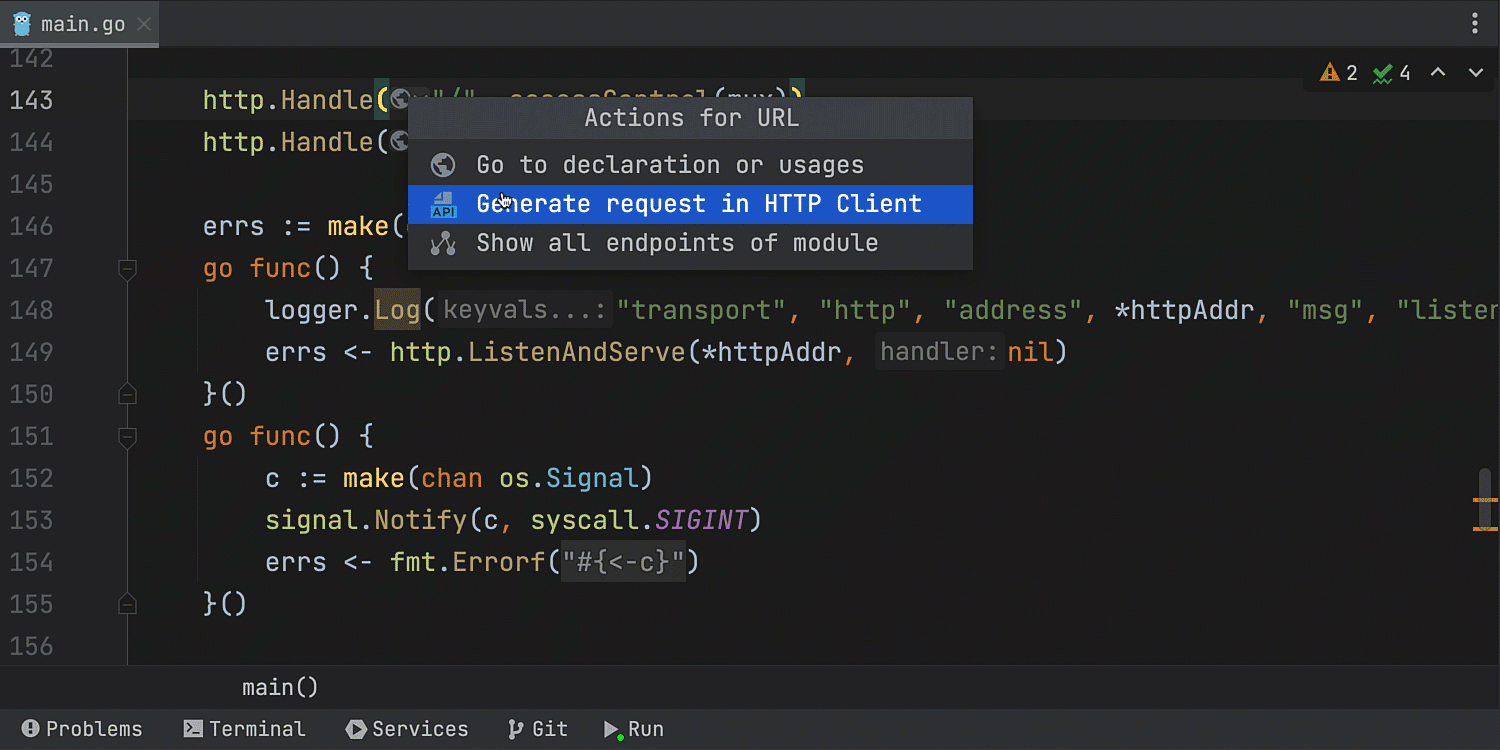
Generate a request
The second option you'll see when you click on the globe icon is Generate request in HTTP client. Choose a corresponding option, and the IDE will open a bundled HTTP client. This action can be used to generate a request for every valid URL.
Our HTTP client now offers code completion for endpoints.
Completion works for the endpoints from Go files (only the standard library is supported for now),
Swagger specifications, .proto files, and JavaScript files.
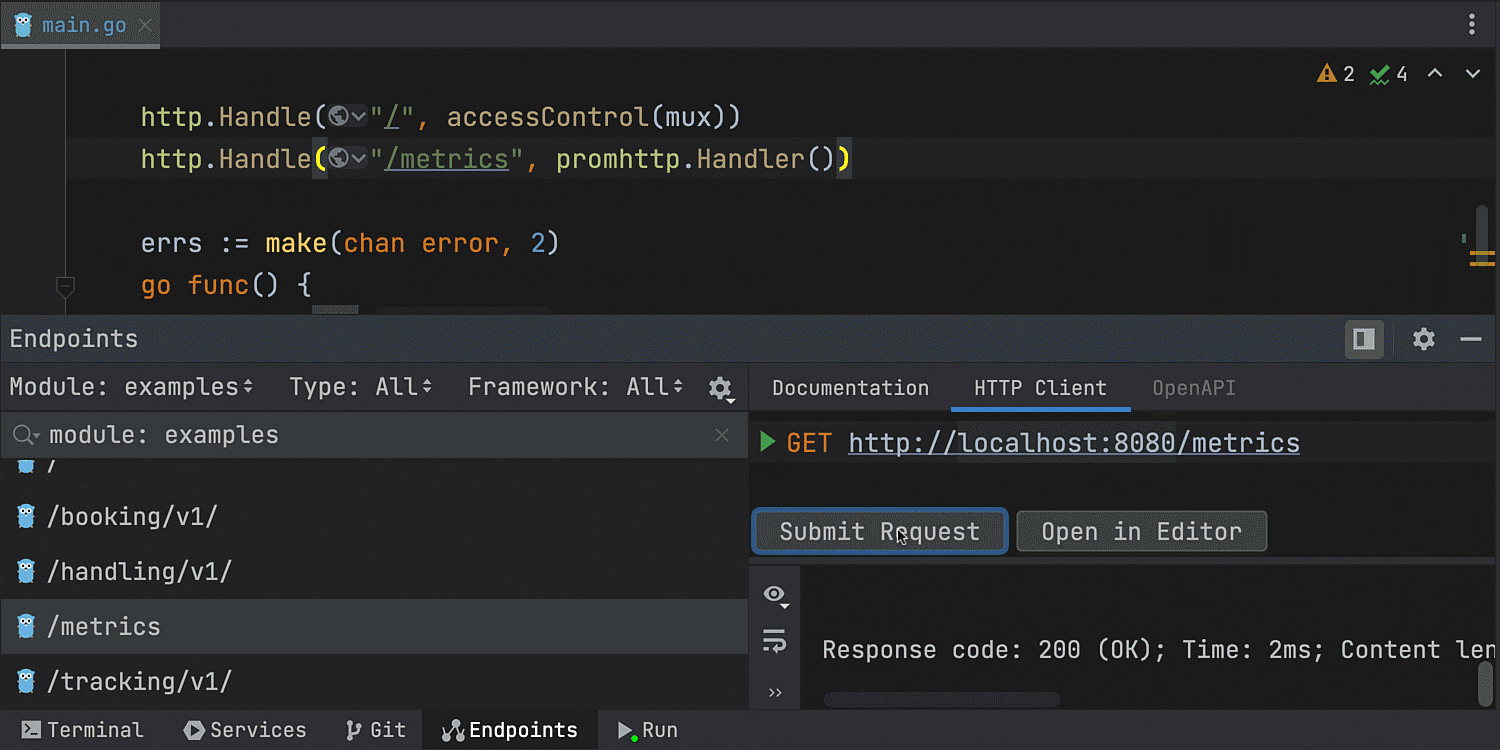
Endpoints tool window
The third option is Show all endpoints of module. If you choose this option, GoLand will open the new Endpoints tool window where you can see all the endpoints for your project.
You can use Jump to source from here, or you can click on any endpoint and run requests right from the HTTP client tab.
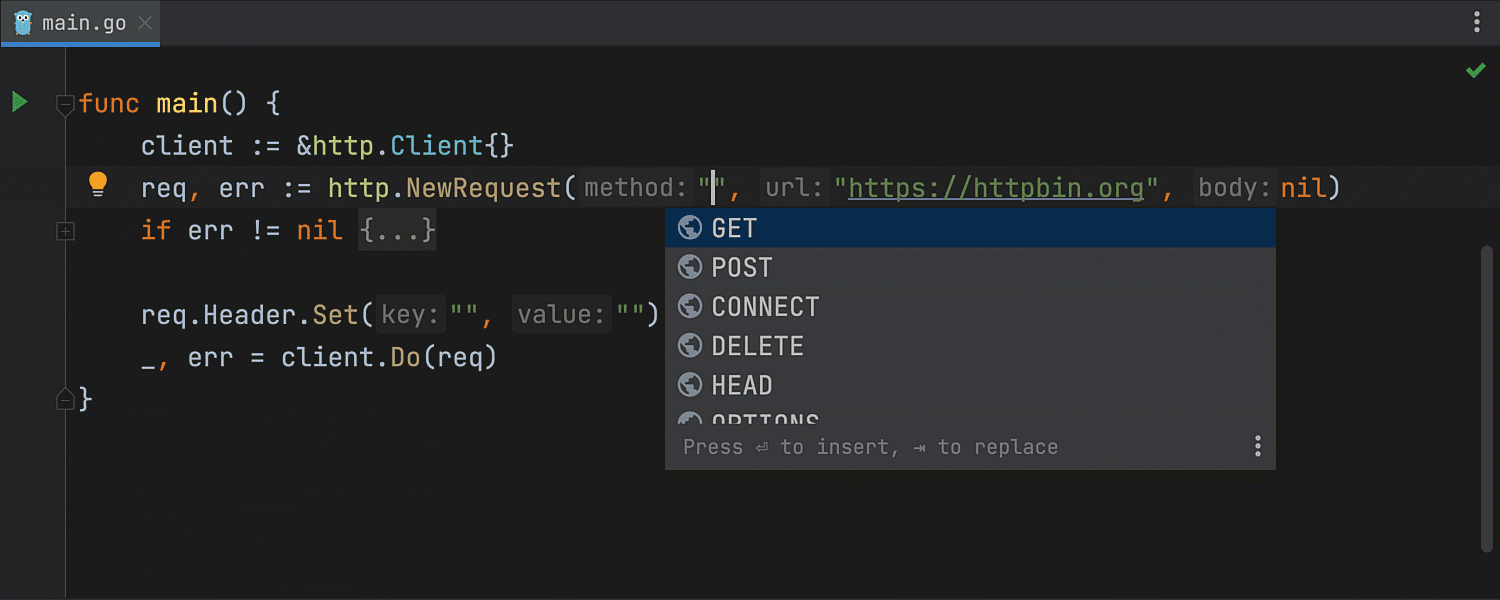
Completion for methods and headers
Code completion now works for HTTP methods and headers in Go files.
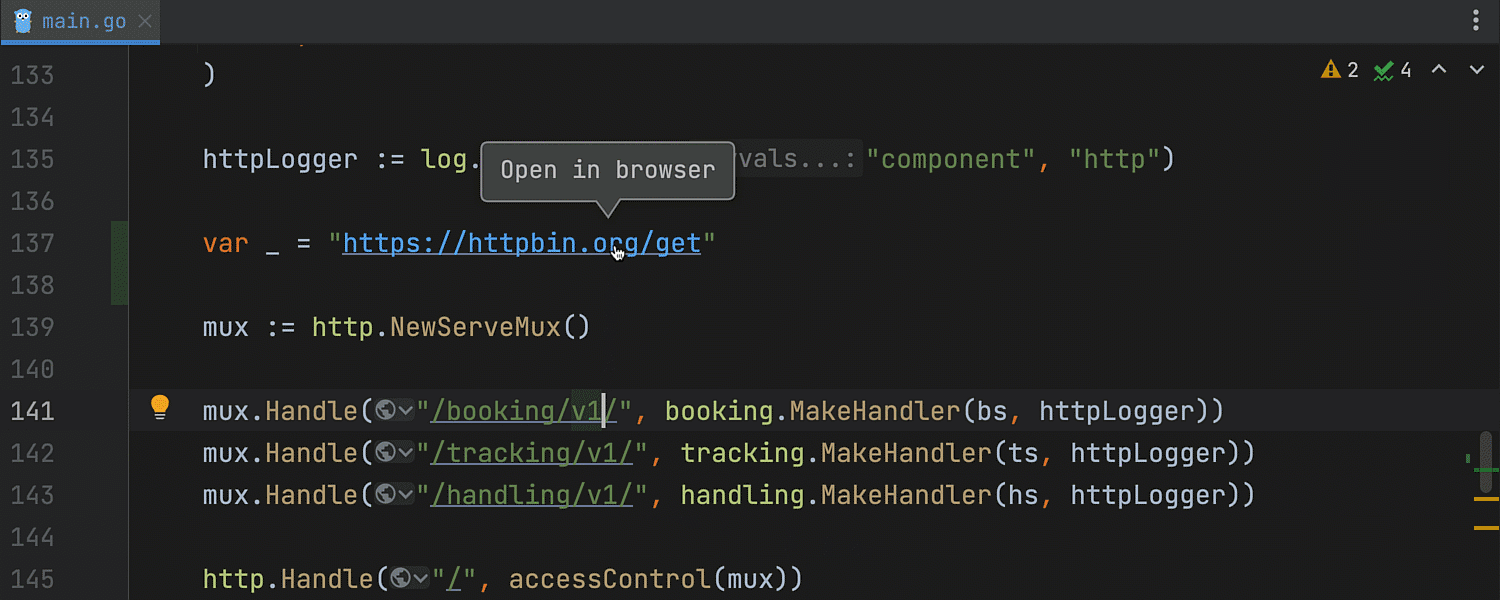
Links and endpoints are underlined
All links and endpoints in Go files are now underlined so you can easily see them in the code. The links are clickable and can be opened in a browser.
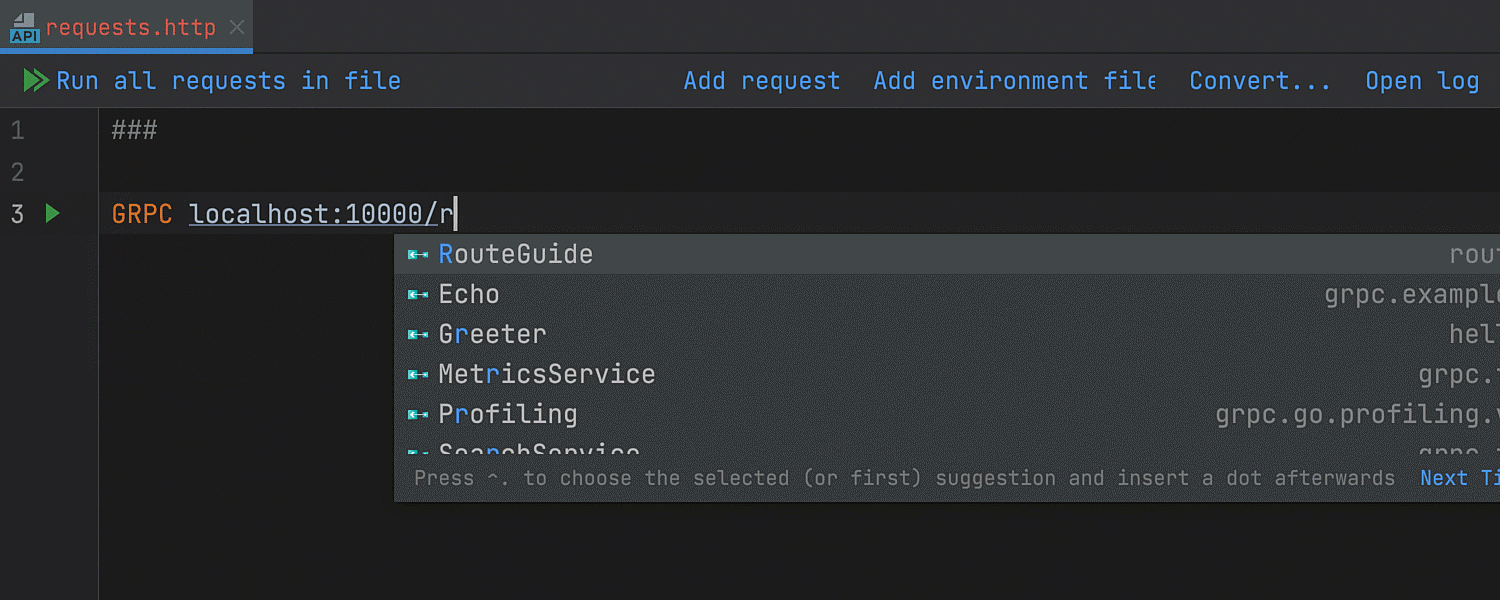
gRPC reflection support
If your project doesn't have a .proto file
but the server supports
gRPC reflection,
you will be able to run requests and get completion
for service and method names right from a running server.
Testing
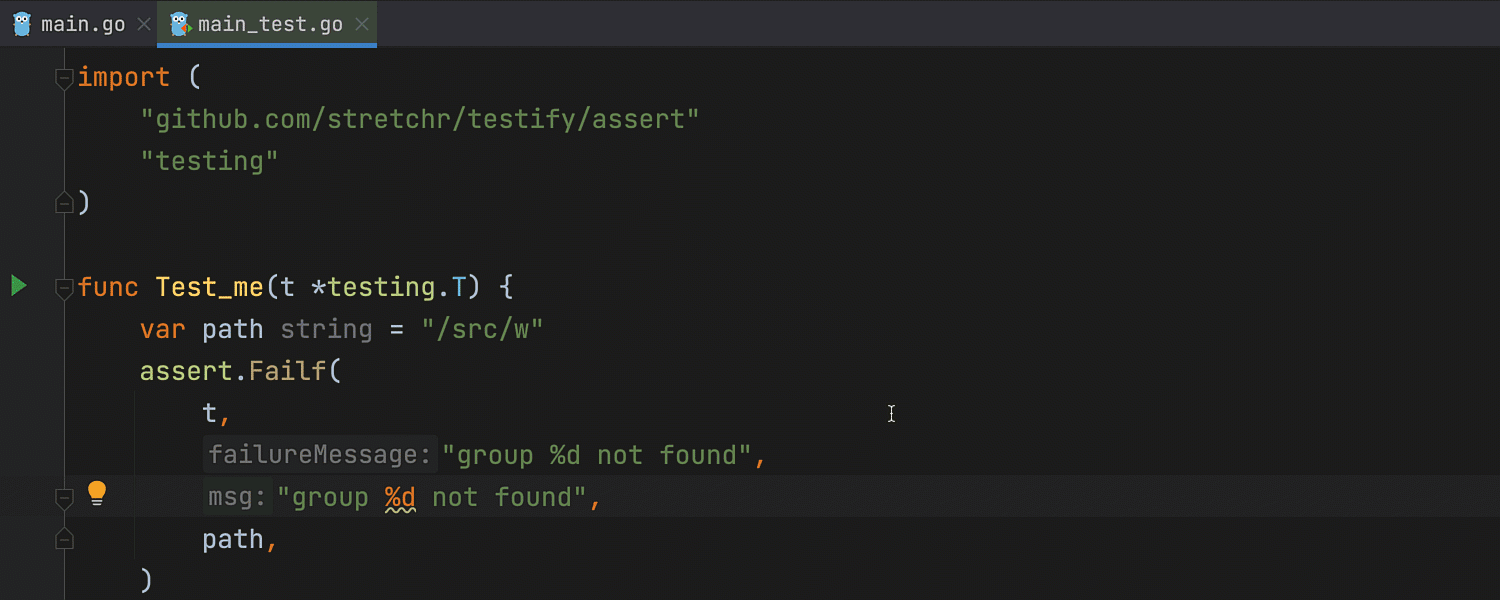
String formatting for testify/assert
GoLand now reports errors if you use the wrong formatting verbs in
testify/assert functions.
Debugger
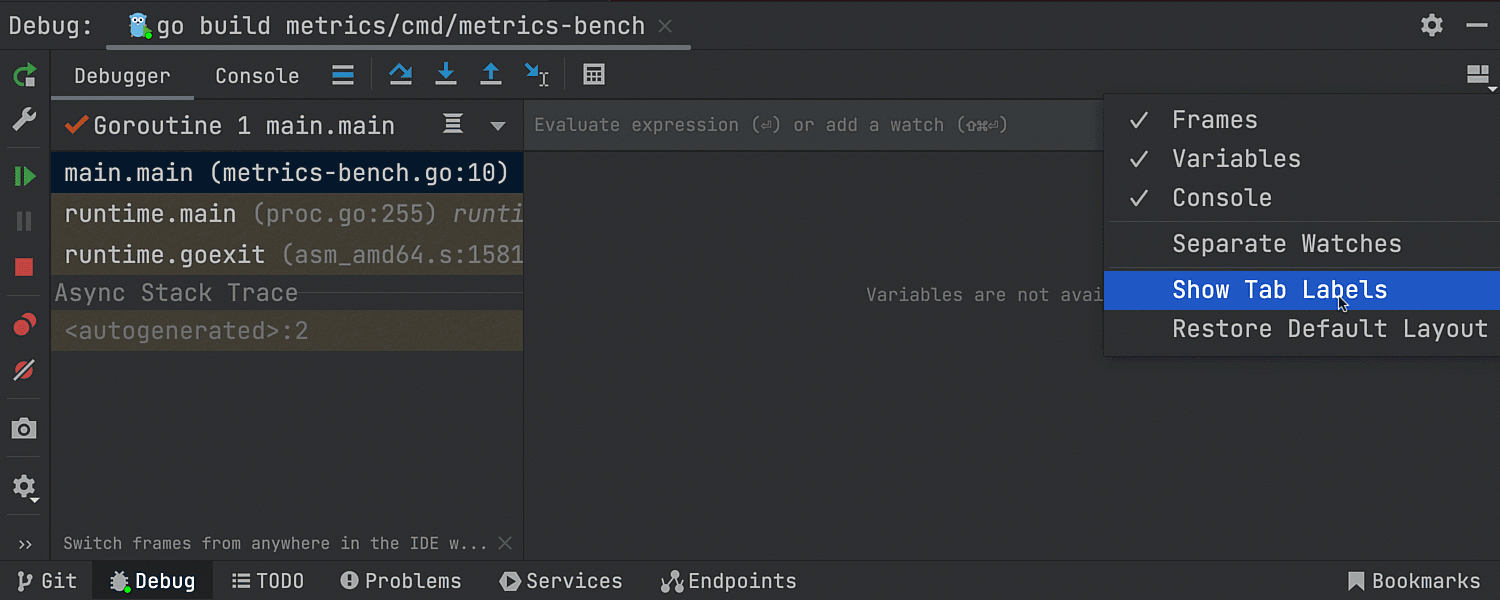
Hidden tab labels
To maximize the usable space in the Debug tool window, we've hidden the tab labels by default. To make them visible again or to customize their location, use the Show Tab Labels option in the Layout Settings.
Kubernetes
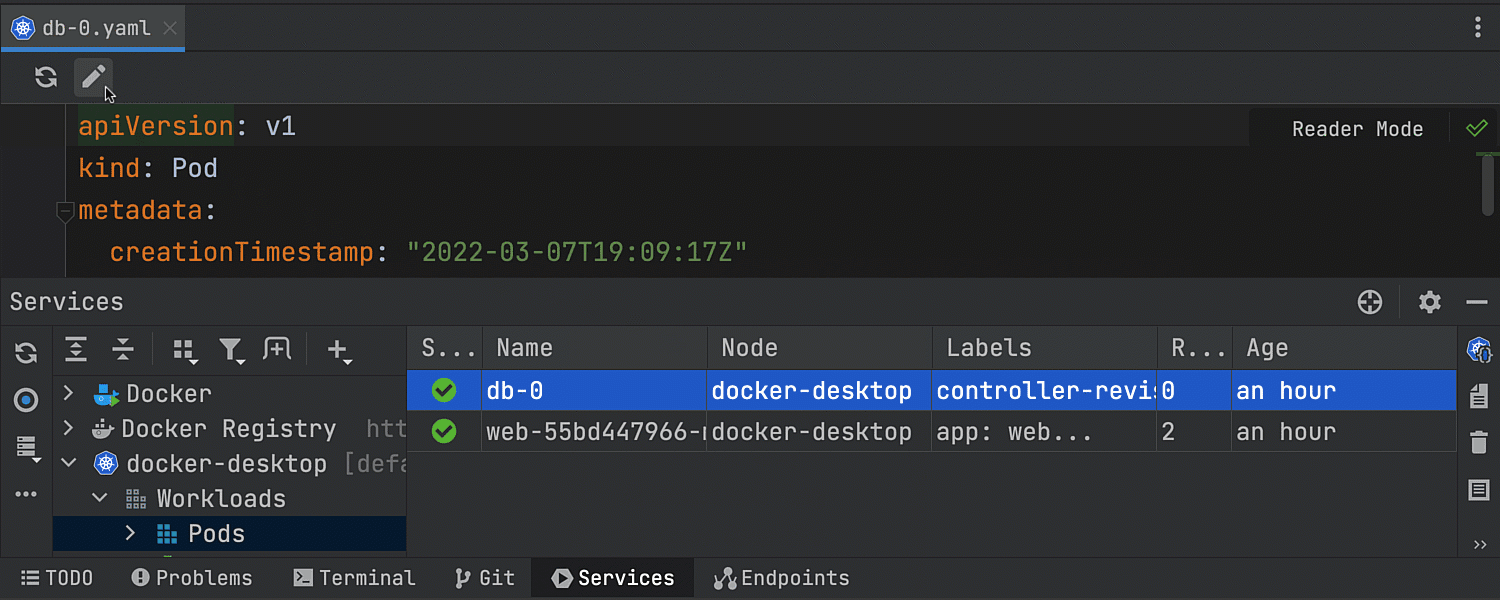
Edit resources on a cluster
Note: the Kubernetes plugin can be installed in Settings | Plugins.
Resources loaded from a cluster can now be modified from the editor tab.
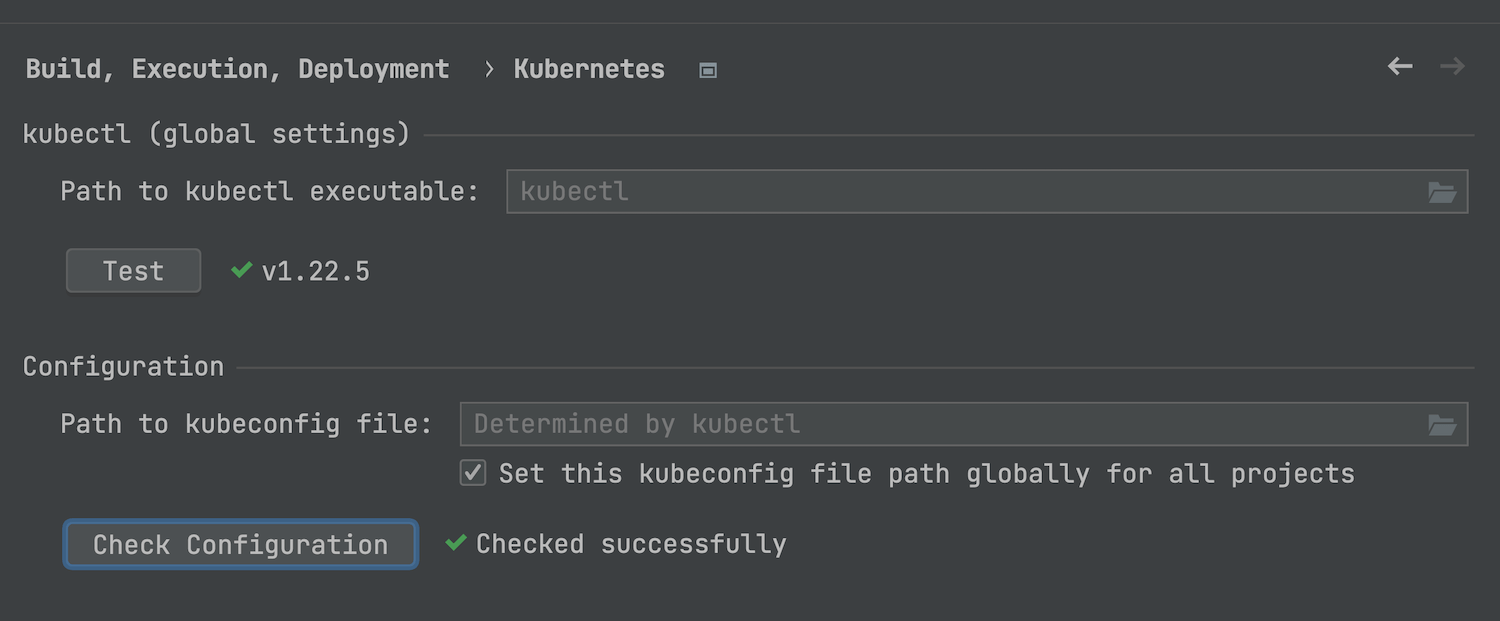
Custom path to kubectl
You can now manually configure a path to kubectl if it is not in the standard location. To set your custom path, go to Settings | Build, Execution, Deployment | Kubernetes | Path to kubectl executable.
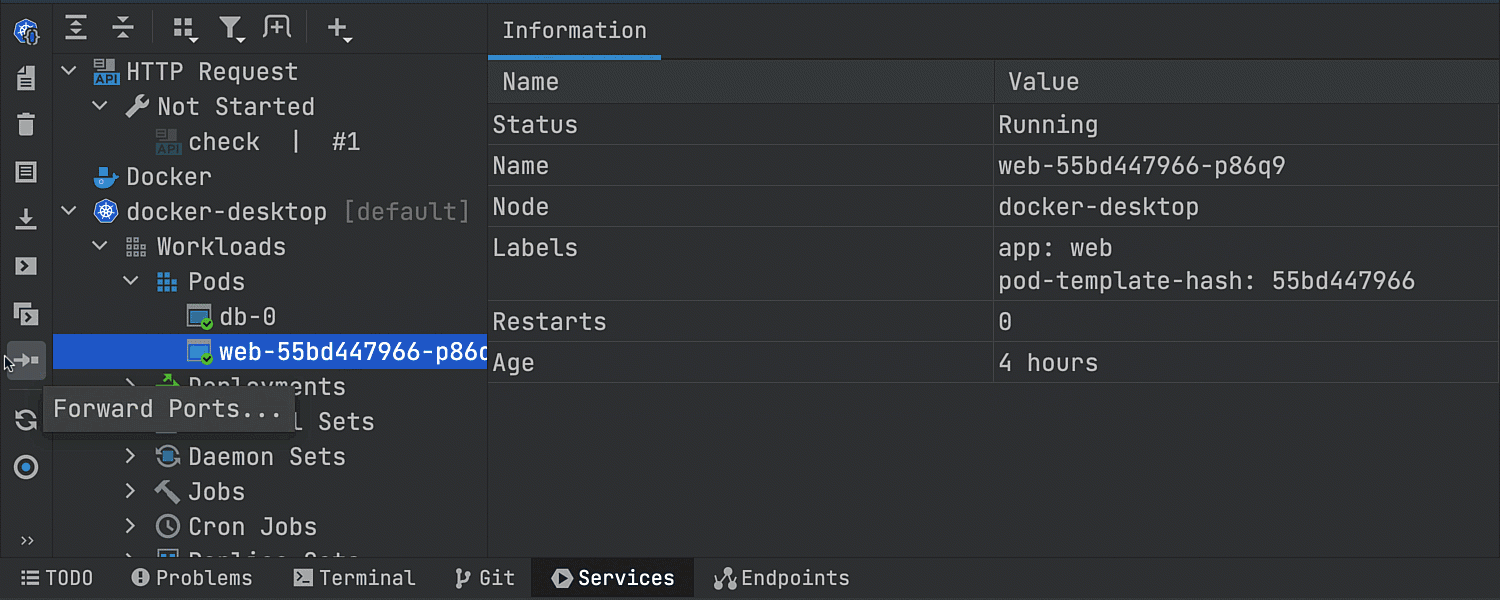
Port forwarding
We've added port-forwarding functionality for pods. To forward ports, you can either use the icon on the toolbar or right-click on a pod and choose Forward Ports… from the context menu.
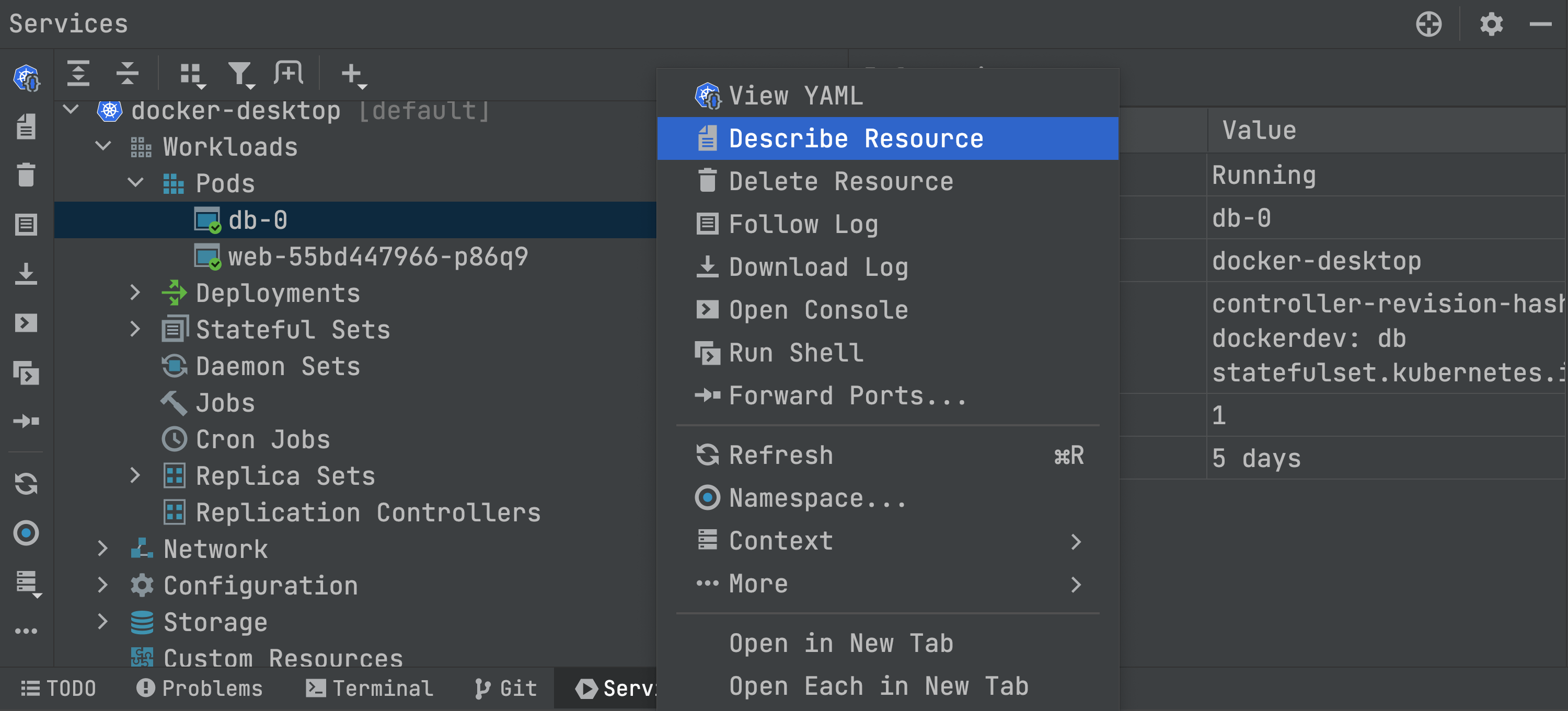
Describe Resource action in the Services view
A new Describe Resource action is present for all resources in the Services view. You can call it from the context menu or use the toolbar button.

Node for cluster events
Cluster events are now displayed in a separate node in the Services view, providing data about recent events in the system.
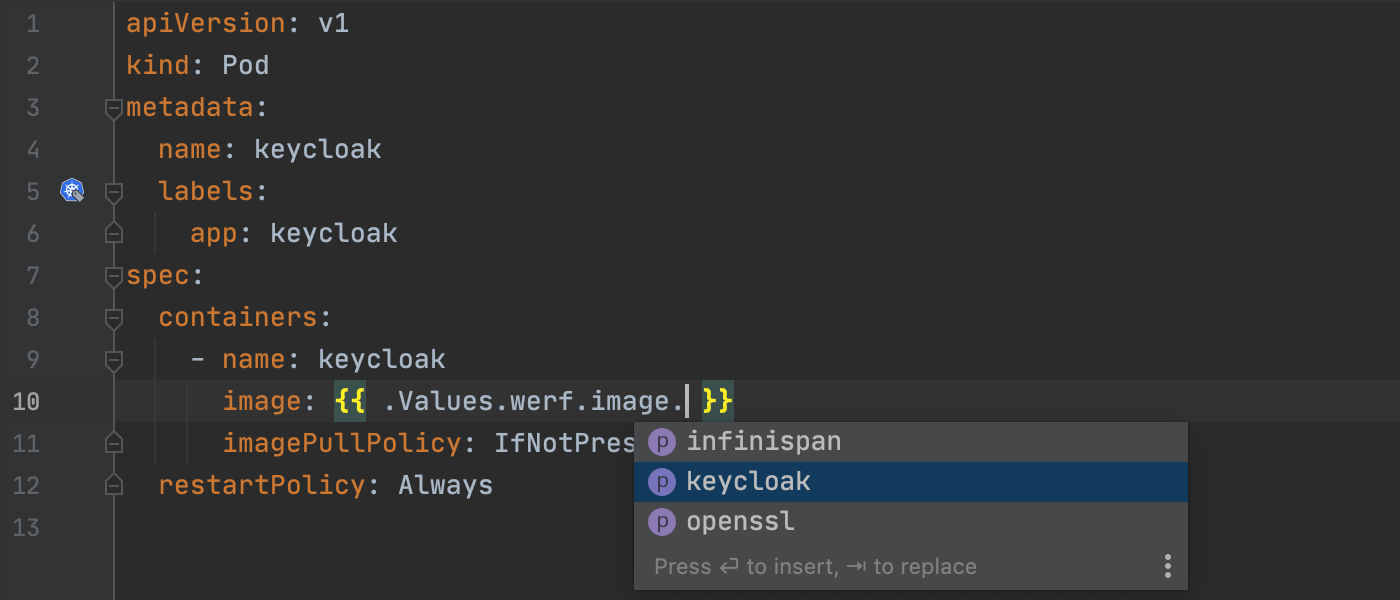
Werf support
We've introduced limited editor support for werf.yaml
and related Helm template files.
The initial support includes code completion,
inspections and quick-fix suggestions,
refactoring and renaming for .Values.werf.image.*,
and validation for some fields like boolean and int.
Docker
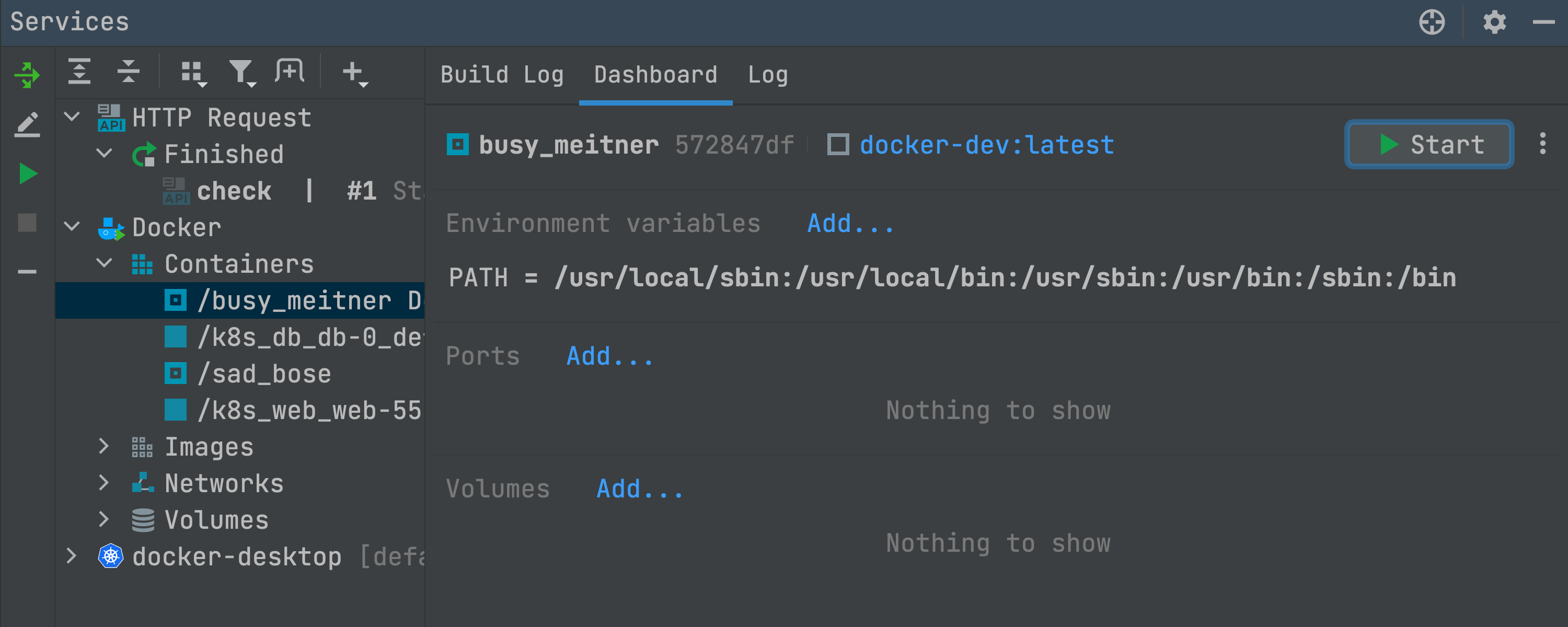
New Services view UI
We've significantly reworked the Docker UI in the Services tool window. The makeover brings improvements for containers, images, networks, and volumes.
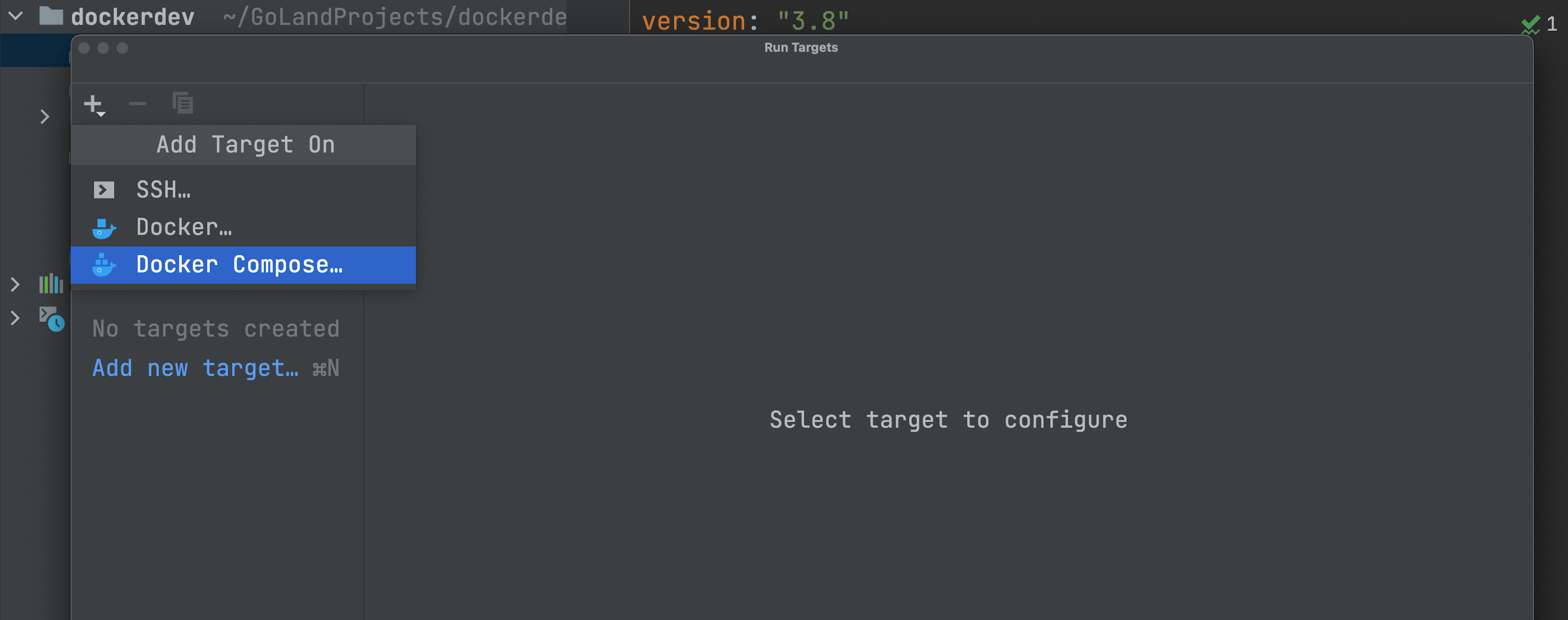
Support for Docker Compose targets
We've added support for Docker Compose targets. To add a target, go to Run | Manage targets and click Add new target.
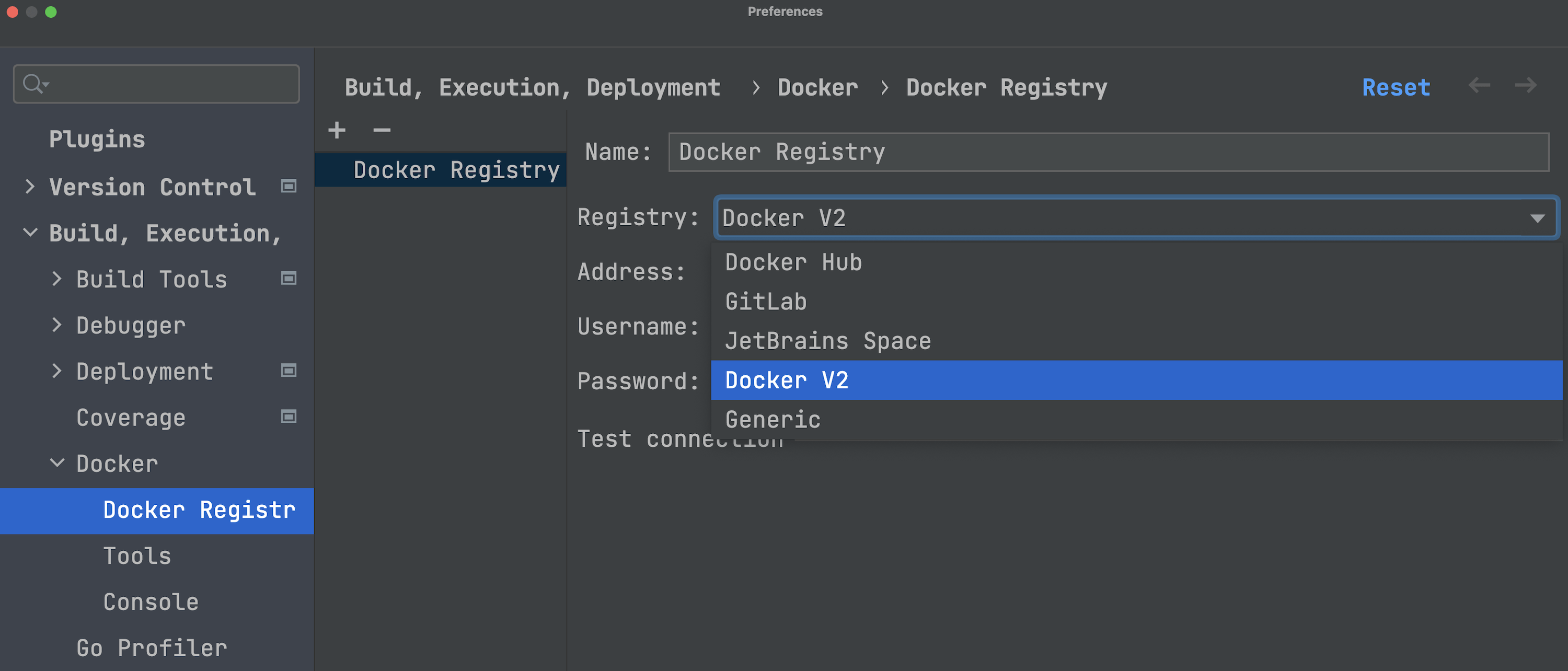
Docker Registry V2 support
GoLand now offers support for Docker Registry HTTP API V2.
Markdown
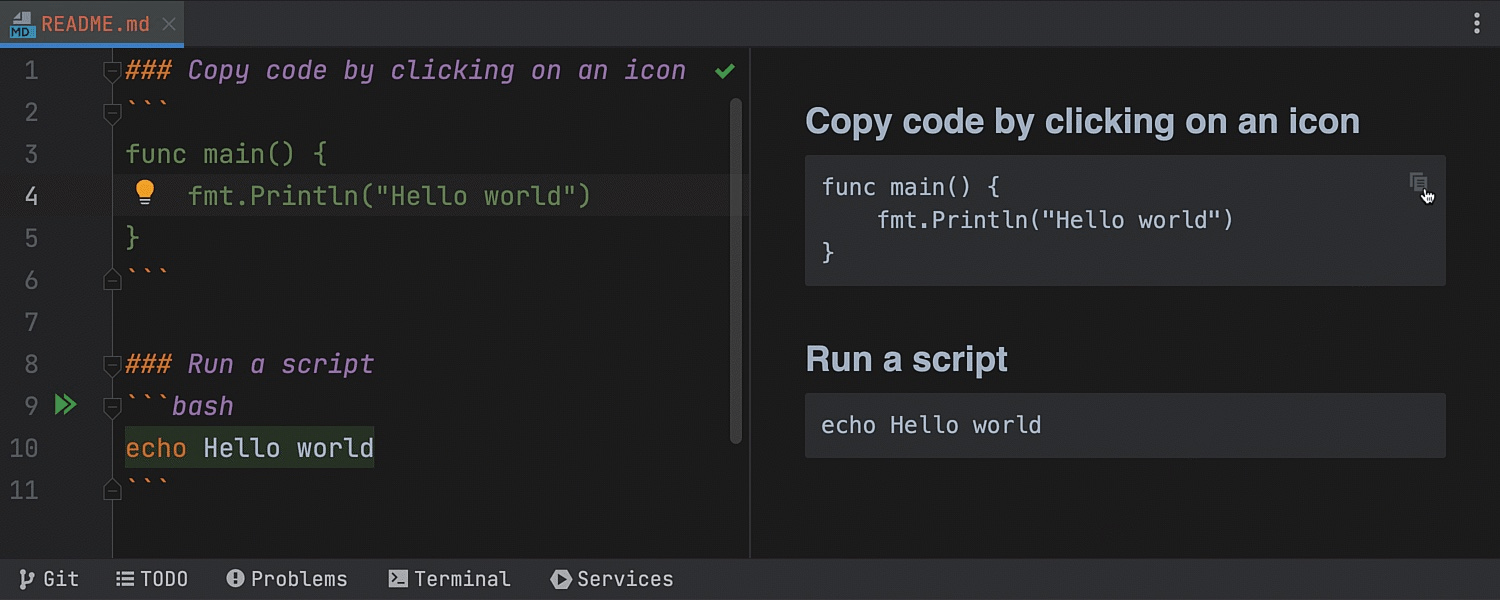
The Copy code icon
We've added a Copy code icon to Markdown blocks to help you easily copy contents to the clipboard.
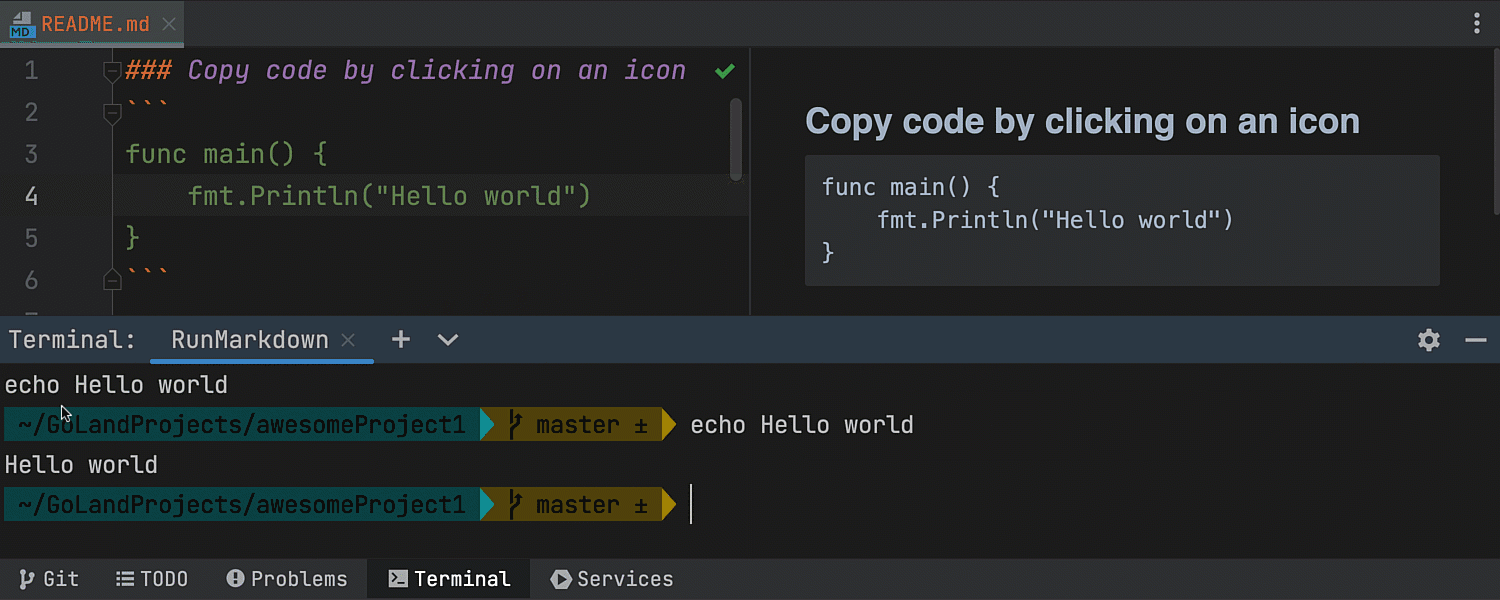
Run commands
If a Markdown file contains instructions with commands that you need to execute in your terminal, you can run those commands directly from the Markdown file using the Run icon in the gutter.
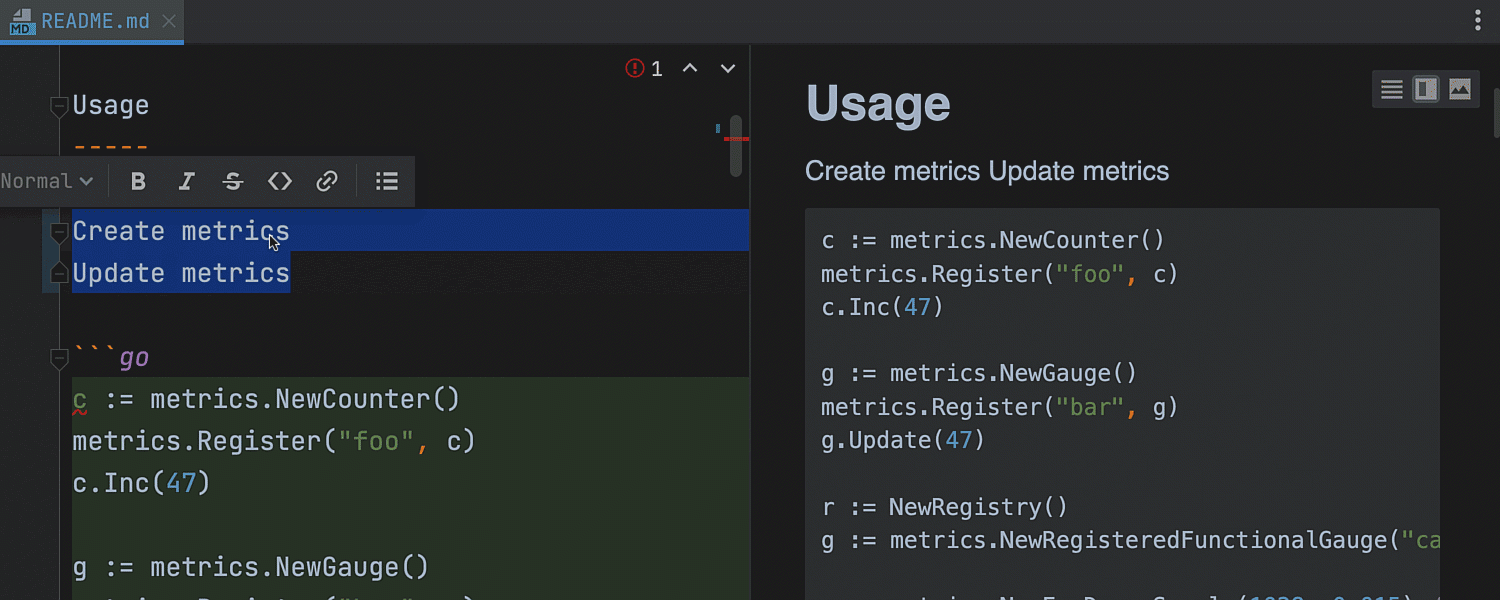
Improved floating toolbar
To make it easier to format Markdown files, we've reworked the floating toolbar that appears on text selection. Besides the new design, the toolbar now offers list creation functionality and a dropdown menu that allows you to select header styles.
User experience

The new Notifications tool window
We've replaced the Event Log instanсe with a new Notifications tool window to highlight important and helpful notifications from the IDE.
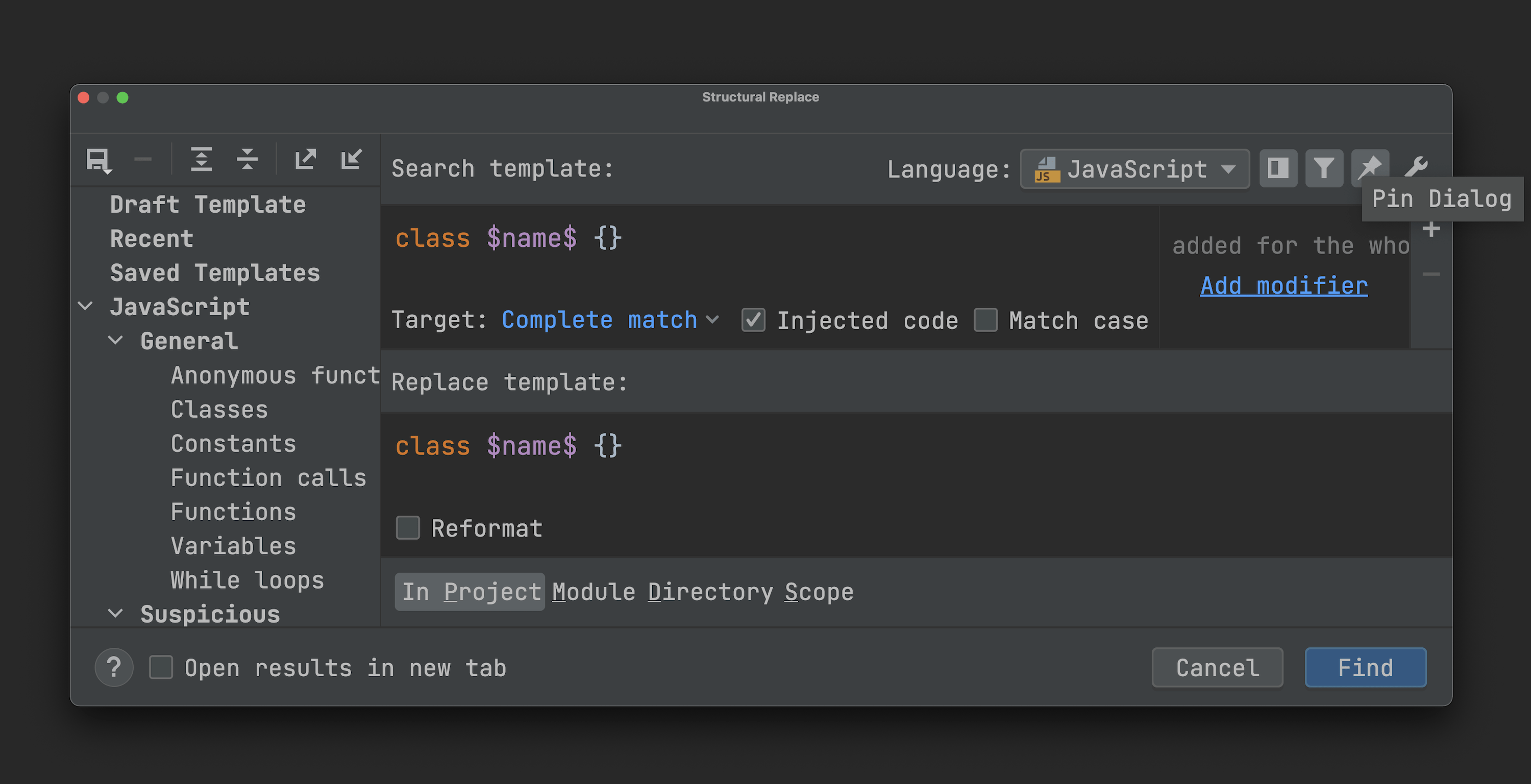
Updated Structural Search and Replace dialog
The Structural Search and Replace dialog has been redesigned to feature a list of all the templates, making it easier to navigate between them.
For Structural Search and Replace, GoLand supports XML, HTML, SQL, and JavaScript.
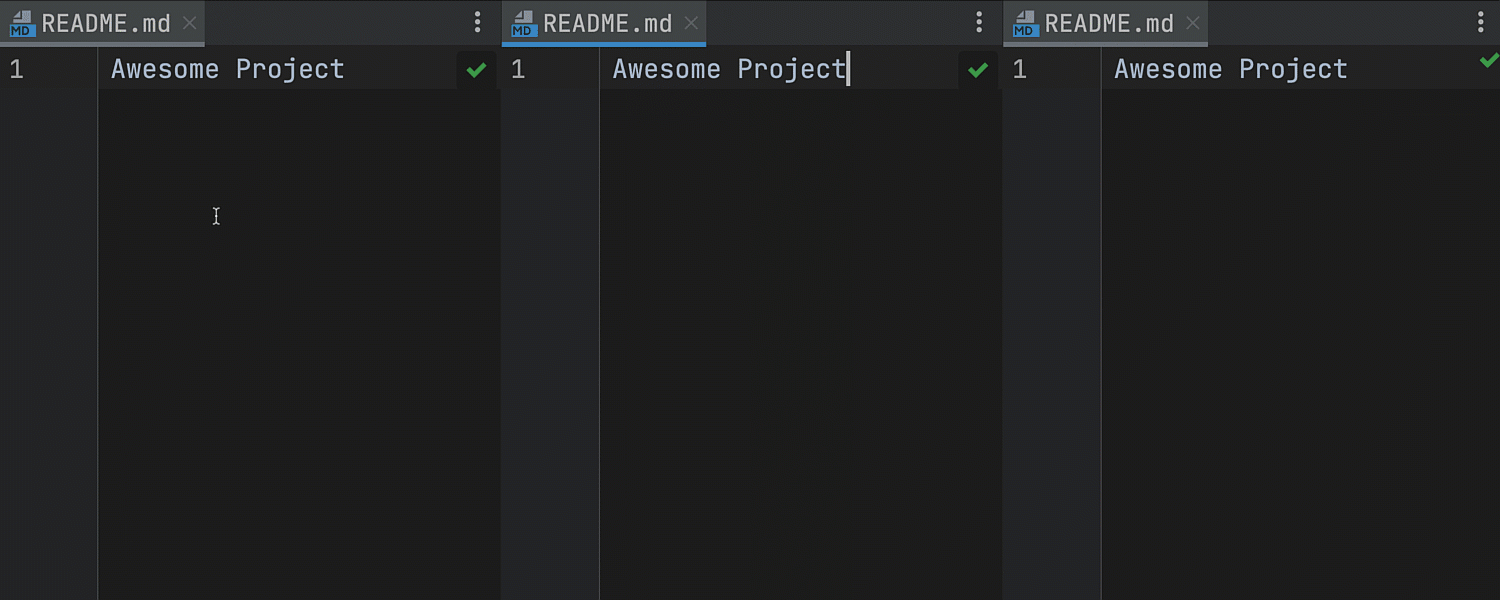
Evenly split tabs
You can now distribute the working space in your editor evenly among various tabs. To set this up, go to Settings | Advanced Settings | Editor Tabs and select Equalize proportions in nested splits.
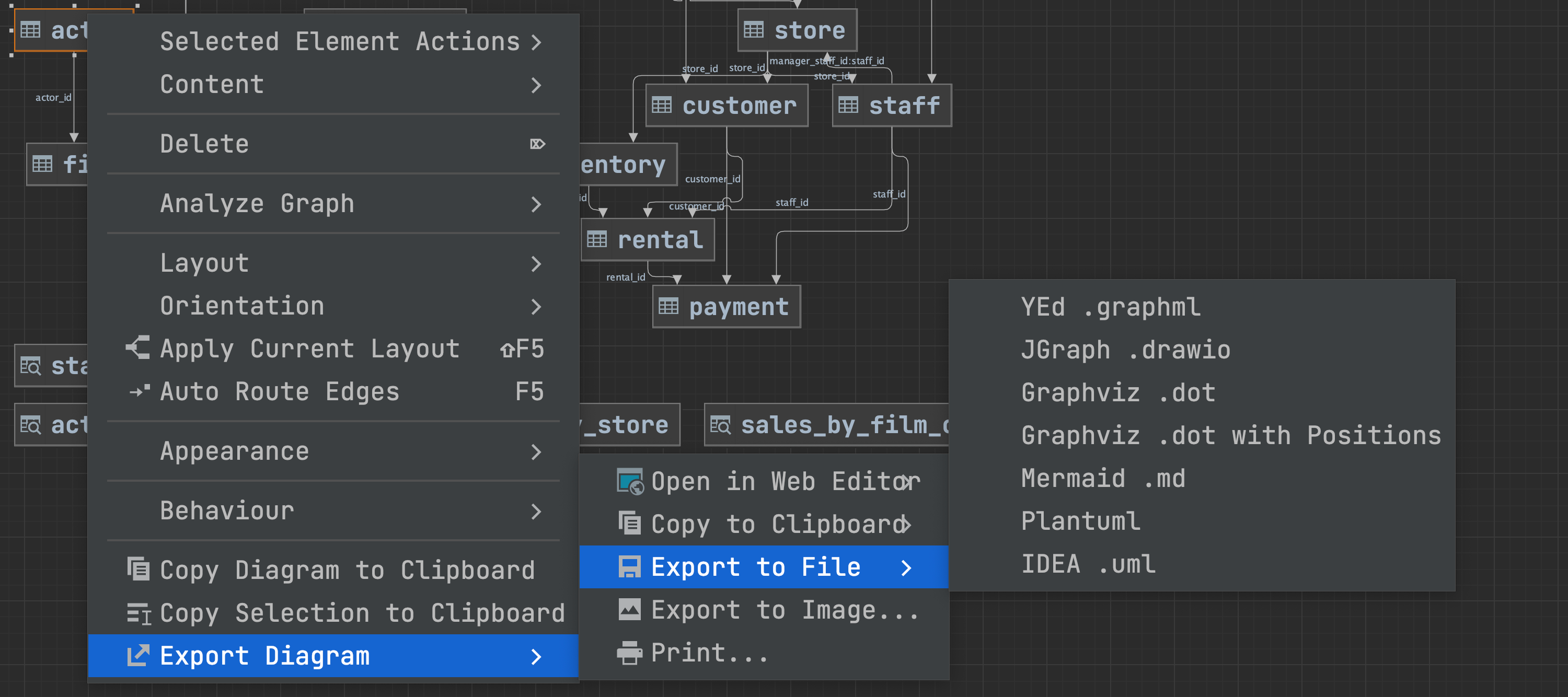
Export UML diagrams to other formats
It is now possible to export UML diagrams
as yEd .graphml, JGraph .drawio,
Graphviz .dot, Graphviz .dot with Positions,
Mermaid .md, Plantuml, and IDEA .uml files,
which makes them compatible with third-party tools.
Version control
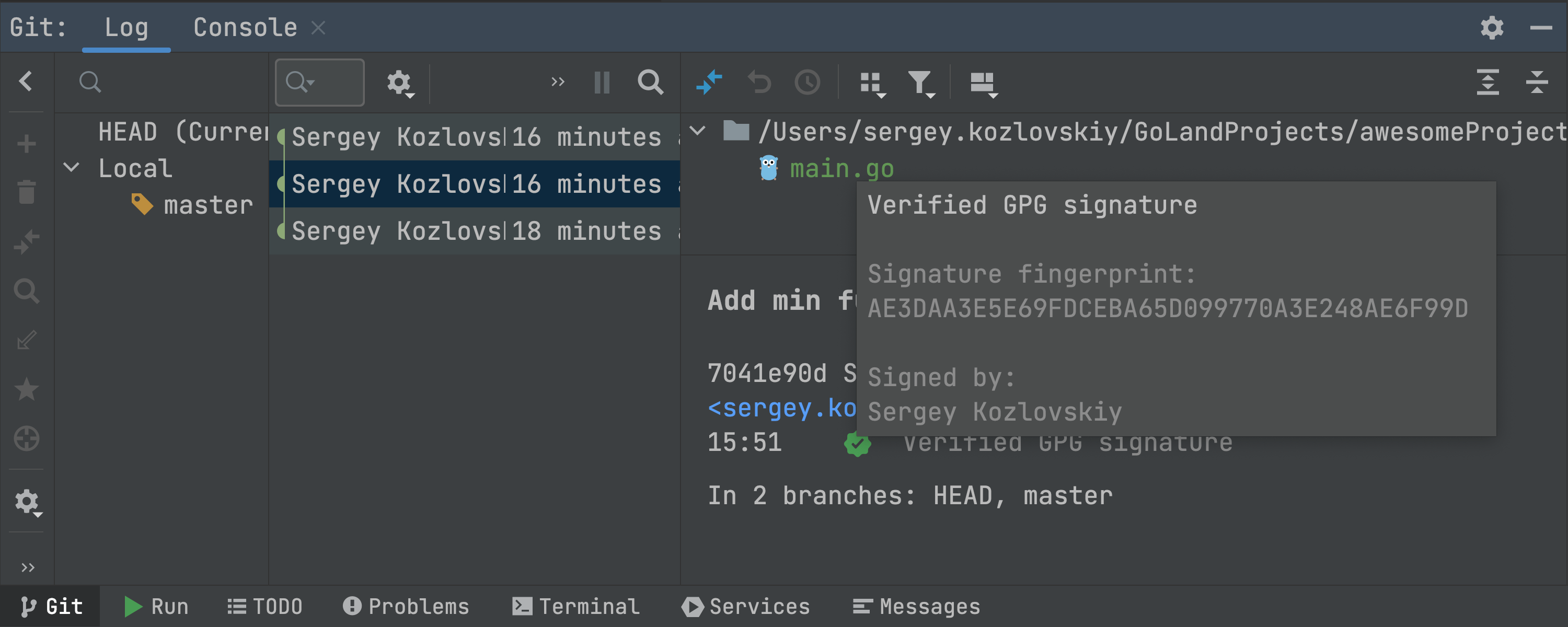
Updated Commit details pane in the Git tool window
The Commit details pane now includes detailed GPG signature information.
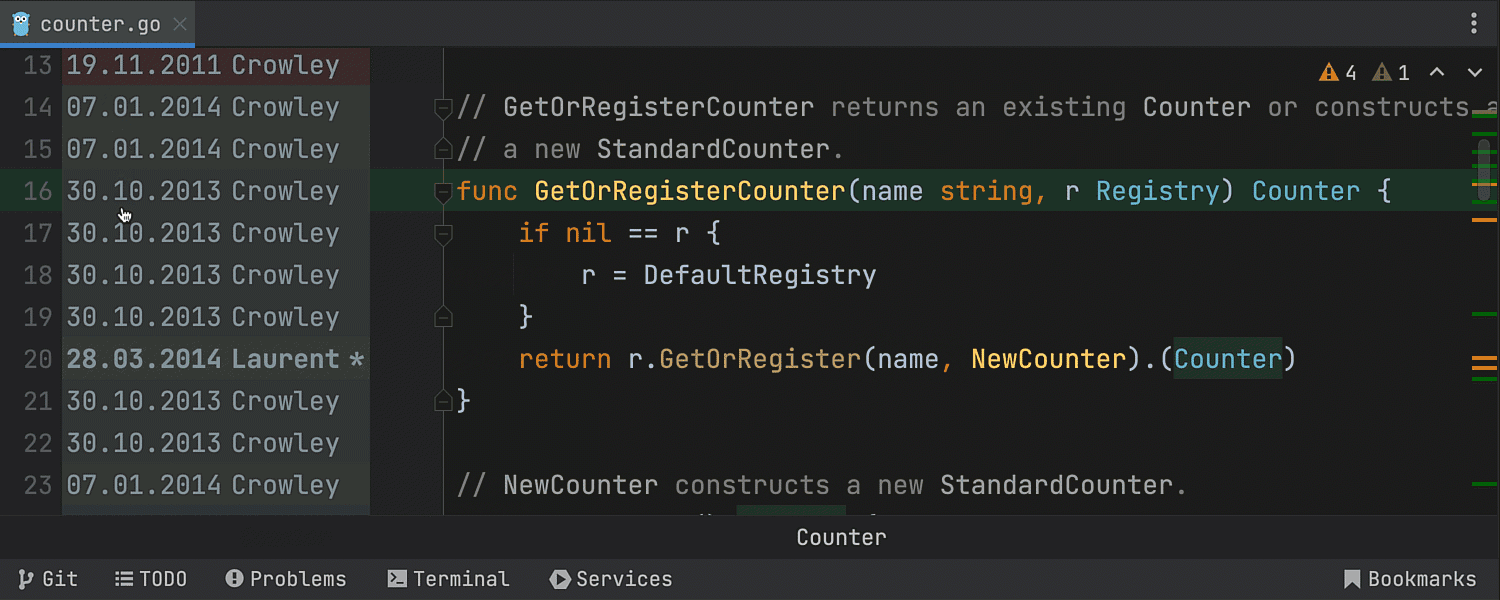
Improved Annotate with Git Blame
We've improved the functionality of Annotate with Git Blame to make investigating changes easier. The IDE highlights the differences in lines right in the editor when you hover over an annotation, and it opens the Git Log tool window when you click on one.
Databases
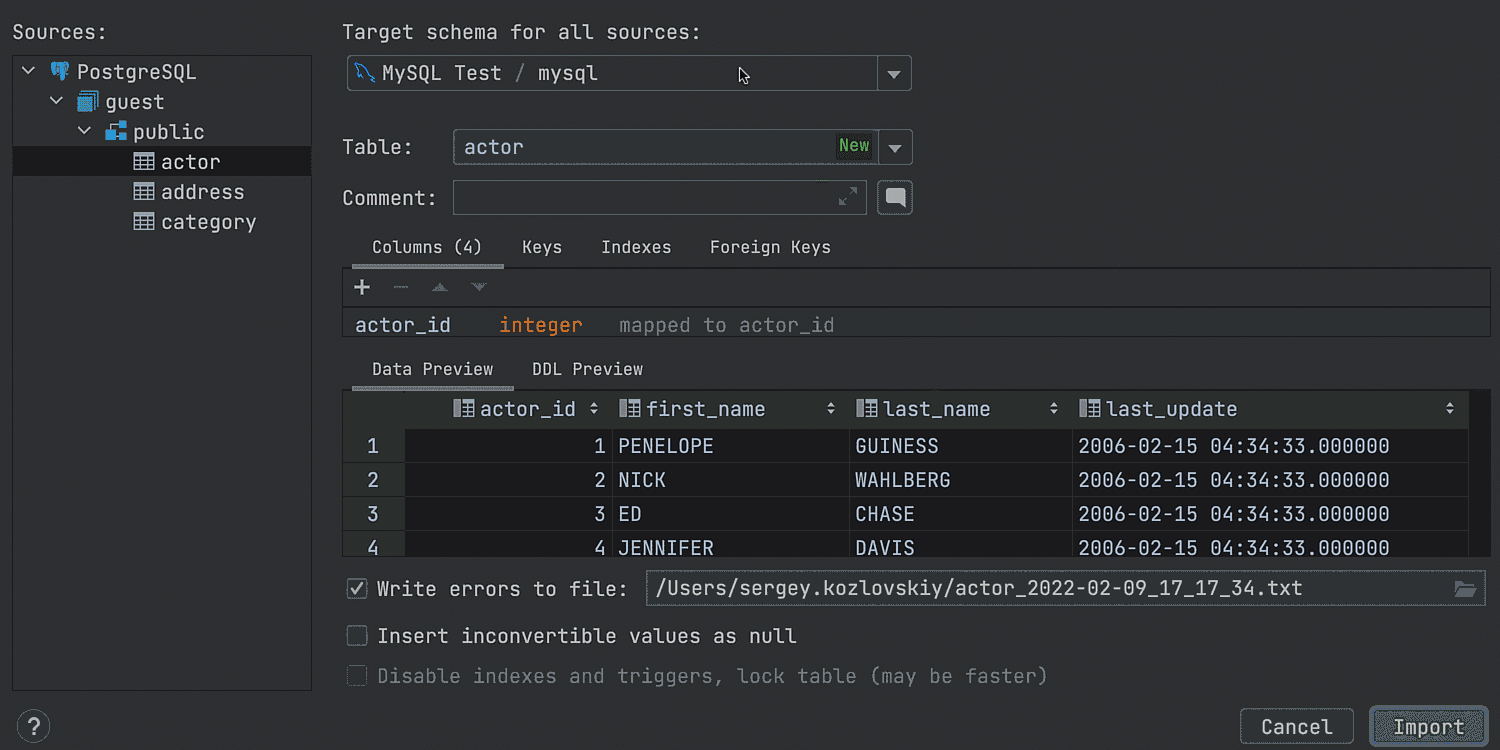
Copy multiple objects
You can now select multiple tables and copy them to another schema.
Select the tables and press F5 to open the export dialog. As with exporting a single table, you can map the columns, see the DDL of the new table, and change it.
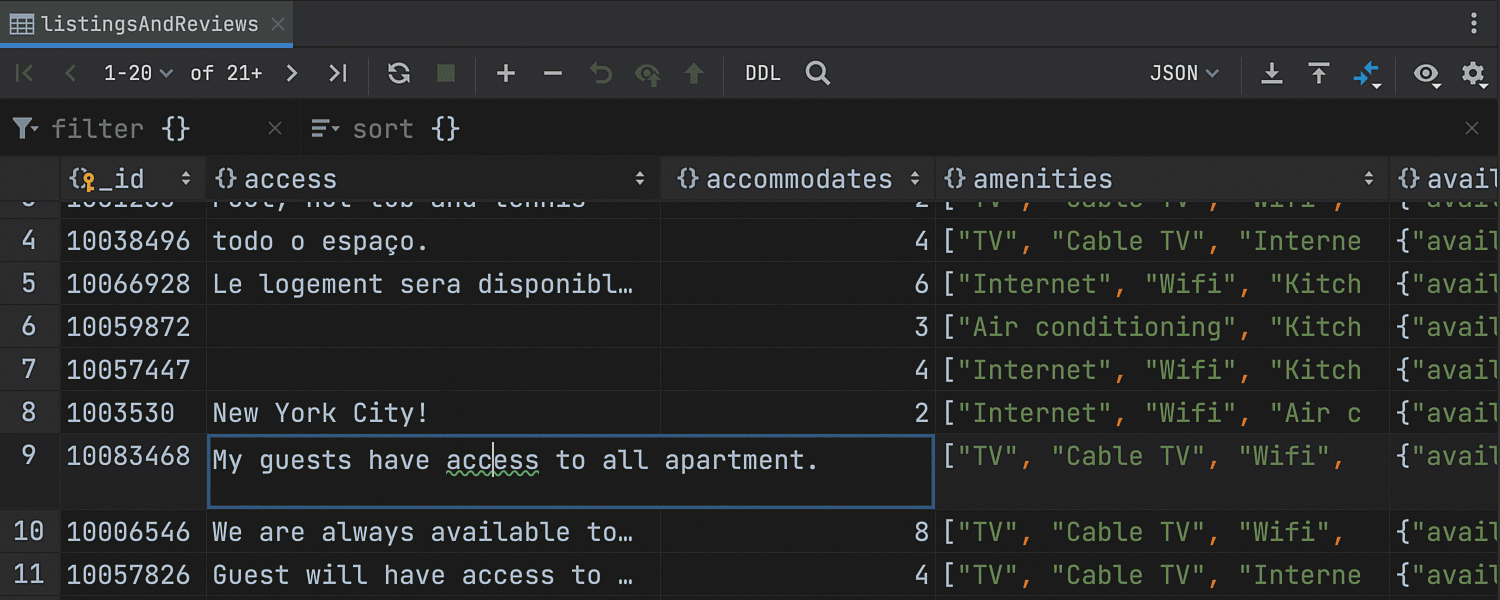
MongoDB: Editing fields in results
You can now edit the results in MongoDB collections just as you do in relational databases.
Note: to learn about all the updates for databases in v2022.1, head over to the DataGrip What’s New page.
Web development
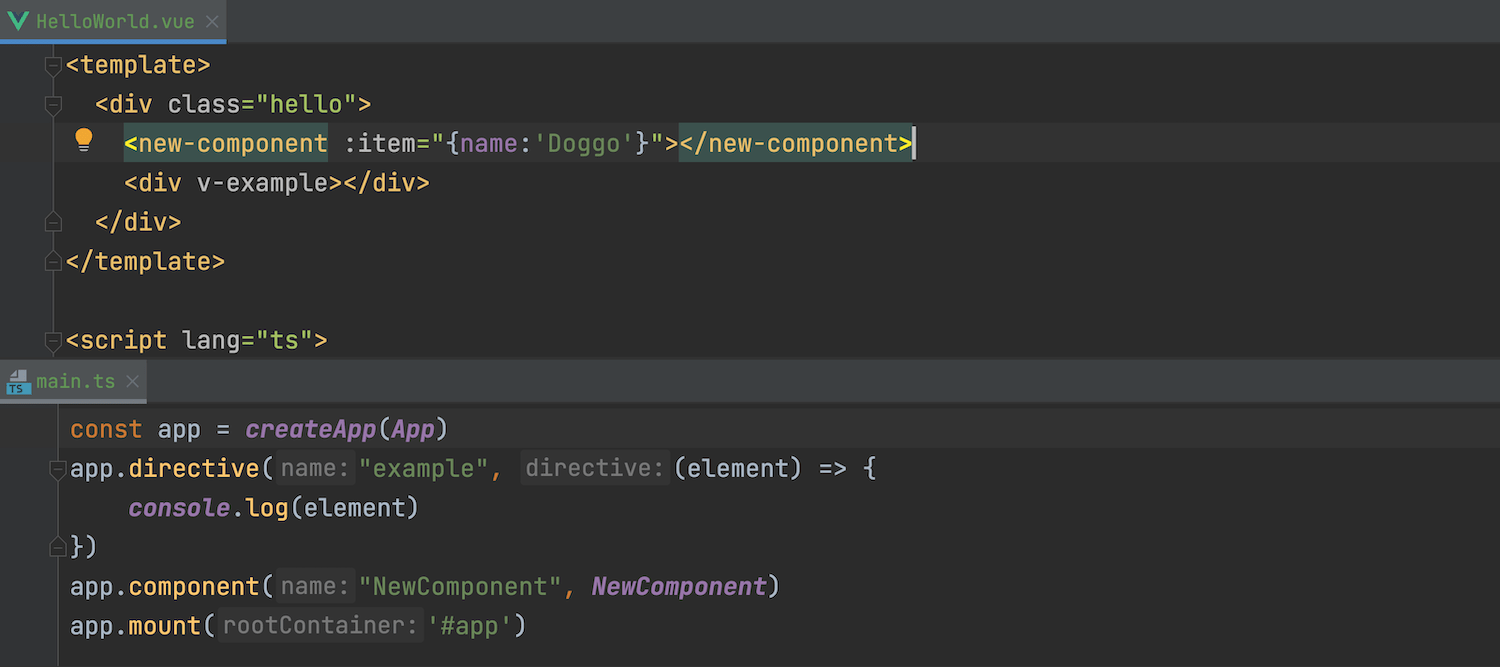
Improvements for Vue
We have several improvements for Vue 3.
If you define components as global,
the IDE will now recognize them in your .vue files.
GoLand should also support the createApp syntax.
It will correctly match applications created using createApp with
their related elements. This version also includes support for Nuxt 3,
a new version of the popular Vue framework.

Next.js updates
We’ve fixed the support for pages.
GoLand resolves paths used in the
href property of
your Link components. Code completion, navigation,
and refactorings like Rename work too.
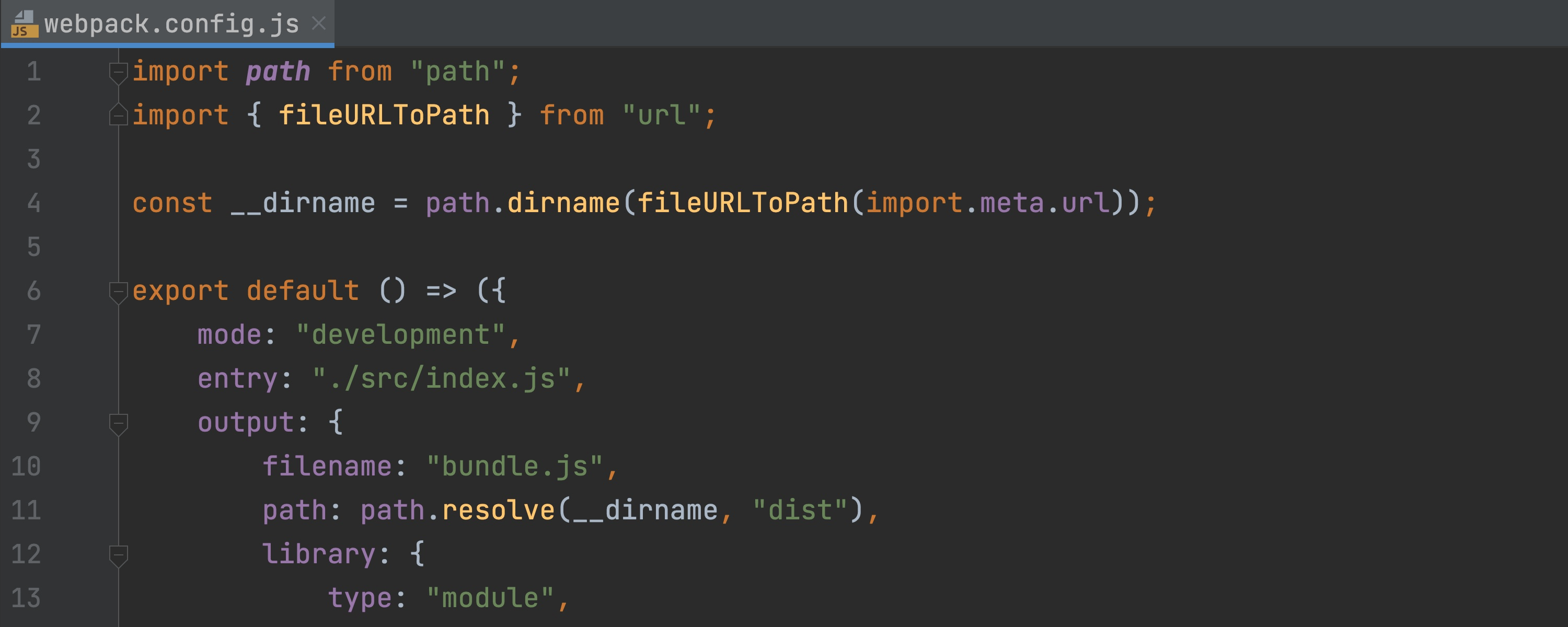
ESM support for webpack configuration
From now on, webpack coding assistance will work with ES modules
in your webpack.config.js files.
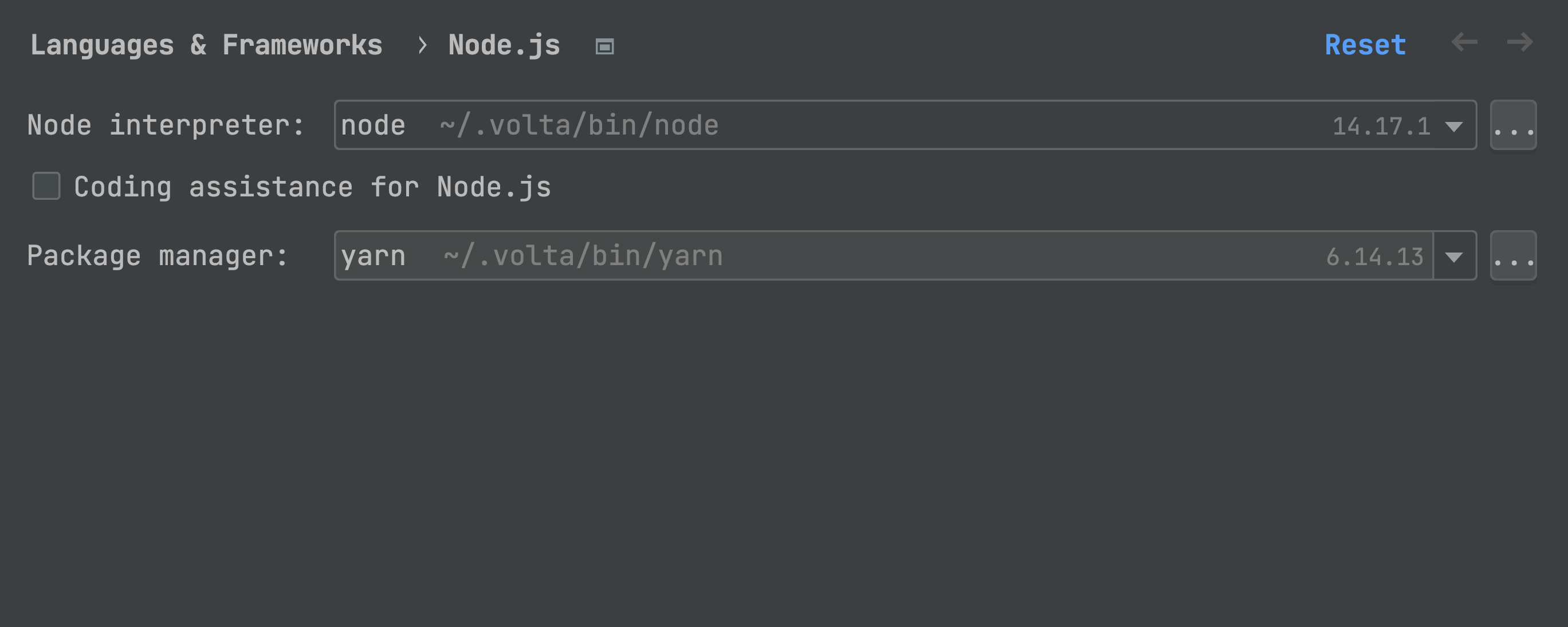
Integration with Volta
GoLand now has integration with Volta, a JavaScript tool manager. It automatically recognizes Yarn and npm installed using Volta.
Note: to learn about all the web development improvements in v2022.1, head over to the WebStorm What’s New page.
Accessibility updates
The screen reader now reads the names and descriptions of the branches' trees in the Log tab and provides a voice prompt to use Ctrl+L to navigate through other Log filters.
Additionally, a number of updates for VoiceOver support were introduced to improve accessibility support for macOS users.